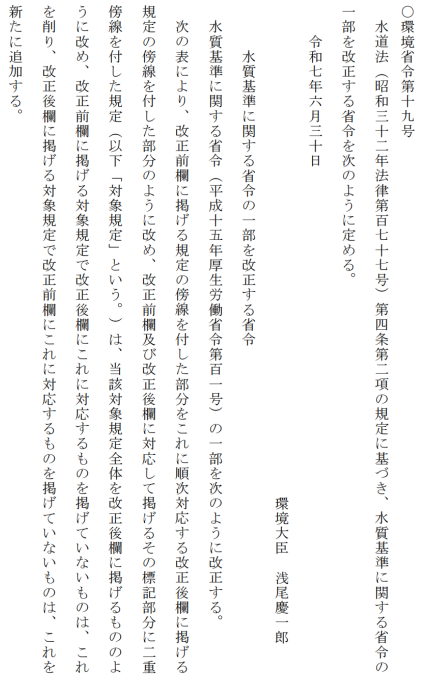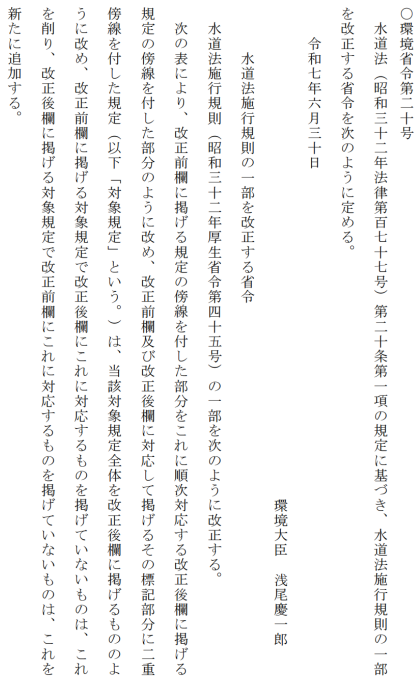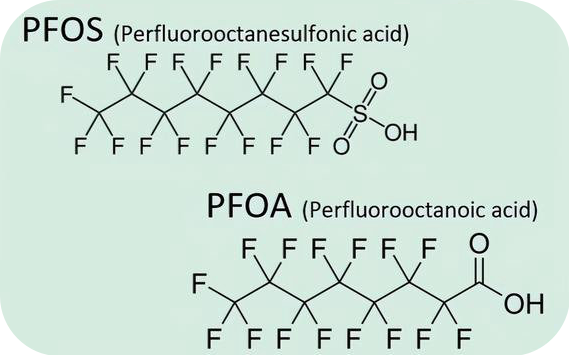18072885002
Japan's New PFAS Regulations for Drinking Water Take Effect!
Drinking Water Safety Once Again in Focus
Recently, Japan's drinking water safety regulations have undergone a crucial upgrade—in June 2025, the Ministry of the Environment officially issued a ministerial ordinance, incorporating perfluorooctane sulfonate (PFOS) and perfluorooctanoic acid (PFOA), two typical "per- and polyfluoroalkyl substances" (PFAS), into the statutory water quality standards of the Waterworks Law. It stipulates that from April 1, 2026, all public water supply systems nationwide (including municipal tap water, private wells, and small water supply facilities) must ensure that the combined concentration of both is ≤50 ng/L. While this standard falls between the US (4 ng/L for a single substance) and the EU (100 ng/L for 20 PFAS), it signifies that Japan's control over PFAS has upgraded from guidance indicators to mandatory legal constraints, setting a clear water quality red line for the water supply industry.
Figure 1. Environmental Ministry Ordinance on the Revision of PFOS/PFOA Drinking Water Limits (Image source: Internet)
The reason why PFAS is of great concern to global regulatory agencies is mainly due to the harm caused by its three major characteristics: On the one hand, it has extremely strong chemical stability and is difficult to degrade—the strong structure of carbon-fluorine bonds makes it almost impossible to decompose in the natural environment. It can remain in water and soil for decades or even longer, and can also accumulate through the food chain, spreading from polluted water sources to crops and aquatic organisms, and eventually entering the human body; On the other hand, it has extremely strong bioaccumulation. Once it enters the human body through drinking water, food, air and other means, it will gradually accumulate in tissues such as the liver, kidneys, and blood, and its metabolism is extremely slow. Even after exposure is stopped, it may remain in the body for several years, forming a "long-term latent" health hazard.
Figure 2. PFOS/PFOA structural formula (Image source: Internet)
After entering the human body, PFAS can cause multi-system damage: it may induce malignant tumors such as kidney cancer and testicular cancer; it disrupts normal liver function, leading to abnormal liver function indicators and hepatocyte damage; it interferes with the balance of the immune system, reducing the body's resistance and increasing the risk of infectious diseases; it may affect reproductive development, leading to birth defects, low birth weight, and even premature sexual maturation in male offspring; it can also be passed to infants through breast milk and umbilical cord blood, causing irreversible effects on vulnerable developing individuals. Previously, PFOS and PFOA were included in the Stockholm Convention's control list, and global requirements for source restrictions, emission control, and end-of-pipe purification are continuously becoming stricter.
Currently, among common PFAS removal technologies, the synergistic process of "powdered carbon adsorption + membrane separation" can efficiently remove PFAS from drinking water. Jianmo's silicon carbide ceramic membrane technology offers multiple advantages:
① Silicon carbide ceramic membrane technology possesses nanoscale precision separation capabilities, efficiently trapping activated carbon particles and related microcolloids that adsorb PFOA/PFOS, ensuring high PFAS removal rates and stable effluent in drinking water;
② Silicon carbide ceramic membranes pose no risk of microplastic contamination, coating peeling, or microbial contamination, preventing secondary pollution of drinking water and safeguarding its safety;
③ Silicon carbide ceramic membrane technology employs a wide-channel and cross-flow filtration design, exhibiting strong anti-fouling capabilities, resistance to clogging, and long cleaning cycles, significantly reducing operation and maintenance costs;
④ Silicon carbide ceramic membranes have a lifespan of up to 20 years, reducing equipment replacement frequency and ensuring long-term compliance for water supply companies.
The implementation of Japan's new PFAS drinking water regulations provides a reference model for global PFAS management. The combination of Jianmo's silicon carbide ceramic membrane technology and powdered activated carbon technology not only effectively removes PFAS from drinking water but also meets the long-term stable operation needs of the water supply industry, helping global water supply companies strengthen their drinking water safety defenses.







